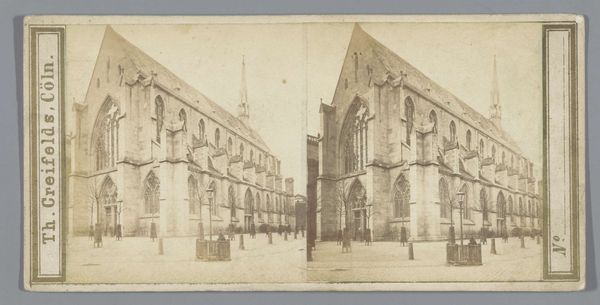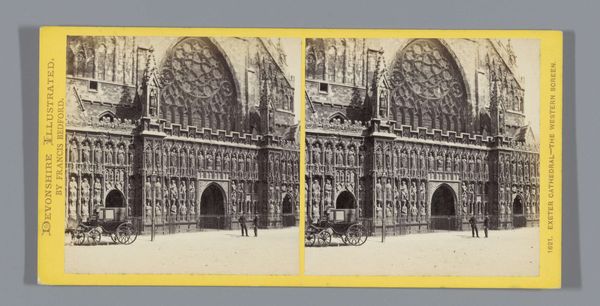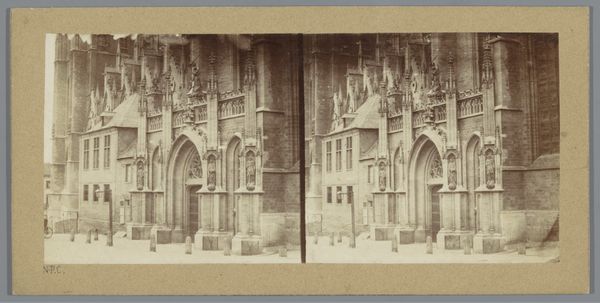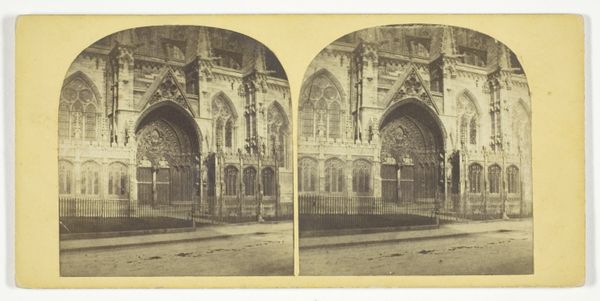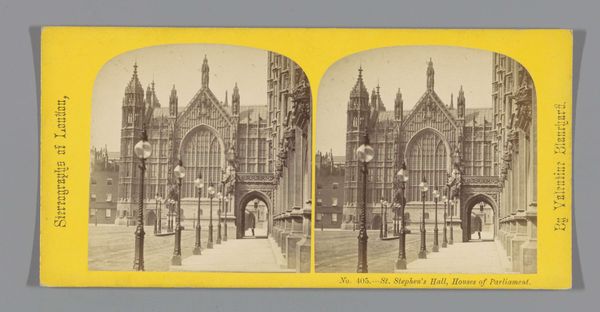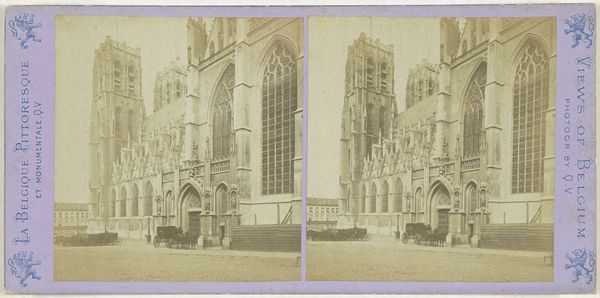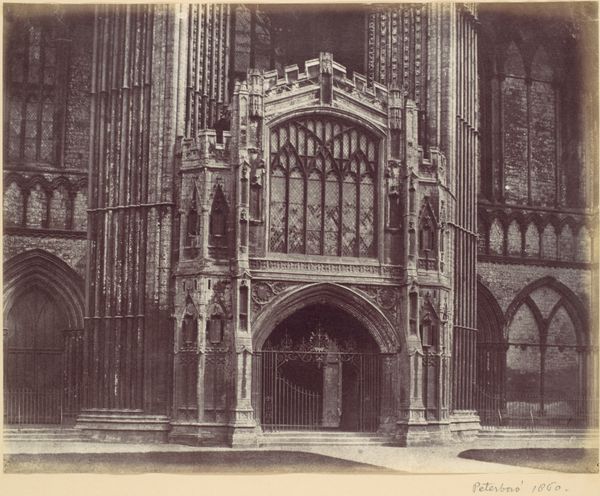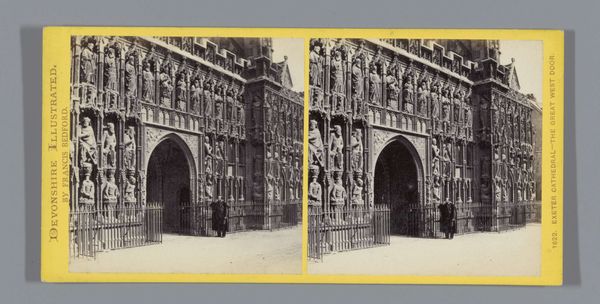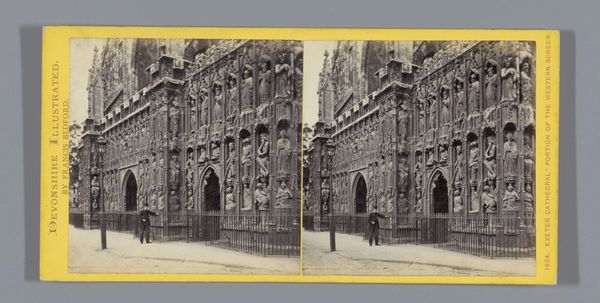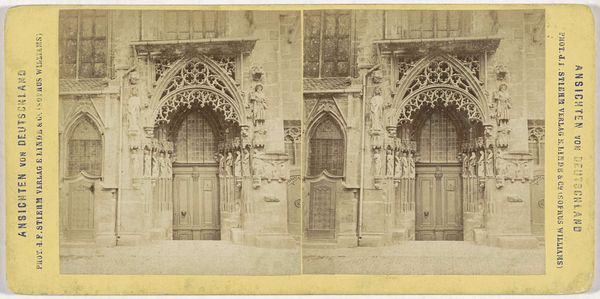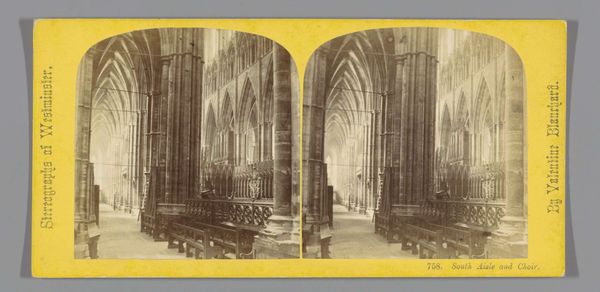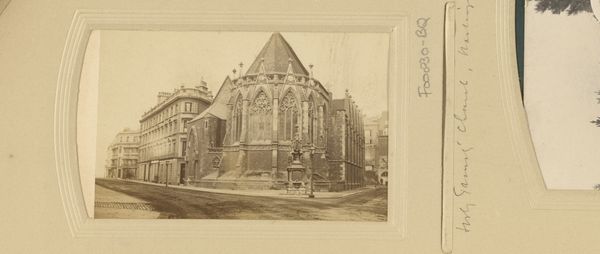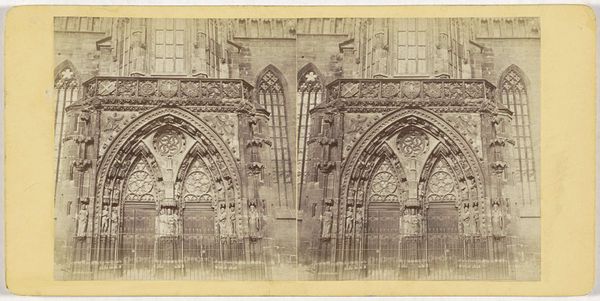
Zijportaal van de Onze-Lieve-Vrouwekerk in Neurenberg, Duitsland 1863 - 1868
0:00
0:00
print, photography
#
medieval
# print
#
landscape
#
photography
#
cityscape
Dimensions: height 88 mm, width 178 mm
Copyright: Rijks Museum: Open Domain
Editor: This stereoscopic image, "Zijportaal van de Onze-Lieve-Vrouwekerk in Neurenberg, Duitsland" by Johann Friedrich Stiehm, captures a side portal of the Church of Our Lady. It dates to the 1860s. There’s something undeniably imposing about the architecture, like a silent witness to centuries of social and religious change. What sociopolitical narrative do you think it conveys? Curator: It’s crucial to see beyond just the imposing facade. The stereoscopic format, popular in the 19th century, offered a "realistic" view but also became a tool for mass dissemination of specific narratives. Consider who this image was *for*, who could afford it, and what messages it reinforced. Editor: So, it's less about the architecture itself and more about the act of representing it? Curator: Exactly! The architecture embodies power – the Church, the state, patriarchy – but the photograph *reproduces* and circulates that power, making it consumable. Were images like this used to project a specific vision of German identity? How does this compare to contemporary issues of representation and power? Editor: I see what you mean. By documenting it, Stiehm, whether consciously or not, contributed to shaping perceptions and preserving a particular, likely Eurocentric, view of history and faith. How much were the economic realities tied into its perception then and its display today? Curator: Incredibly important. Art is not produced nor displayed in a vacuum; we need to critically examine these historical threads of power. Think of who commissioned this image, who profited from its circulation, and who remained unseen. What purpose do those figures carved on the doorway serve in this historical representation? What meaning did these artworks and photographic representation hold for oppressed social and ethnic populations at the time and what does it say to these populations today? Editor: This makes me think about how historical photos continue to influence our understanding of art. It highlights the layers of privilege and cultural narrative imbedded within this art, its period and its current-day interpretations. Curator: Precisely!
Comments
No comments
Be the first to comment and join the conversation on the ultimate creative platform.
